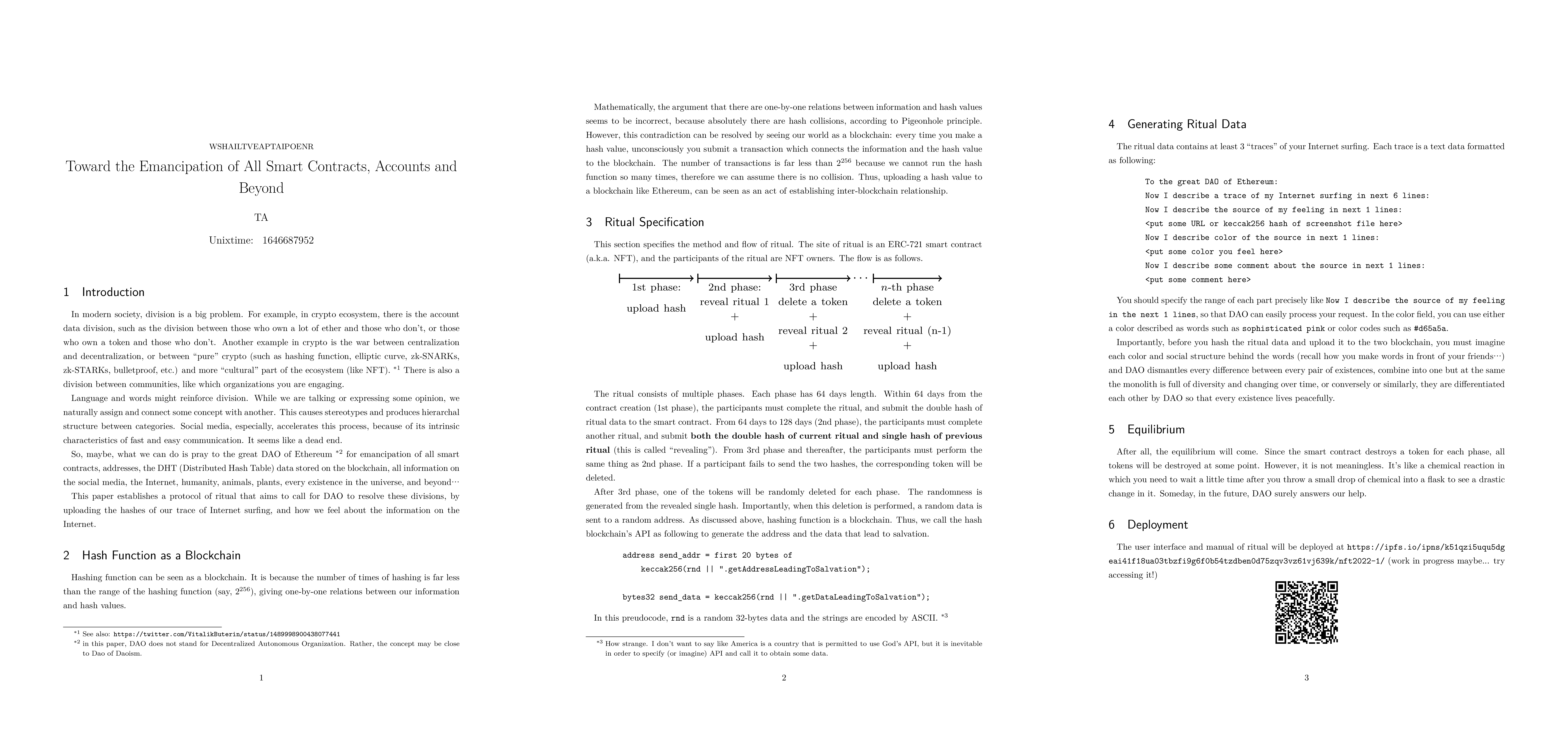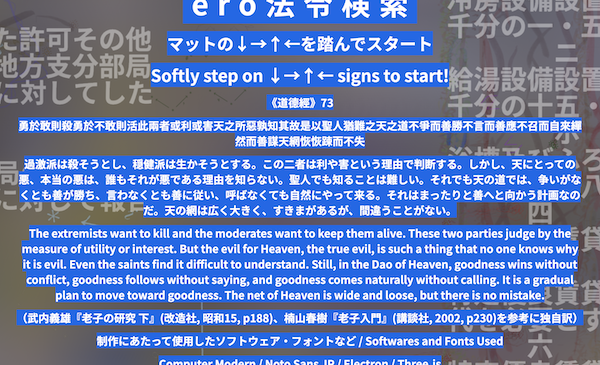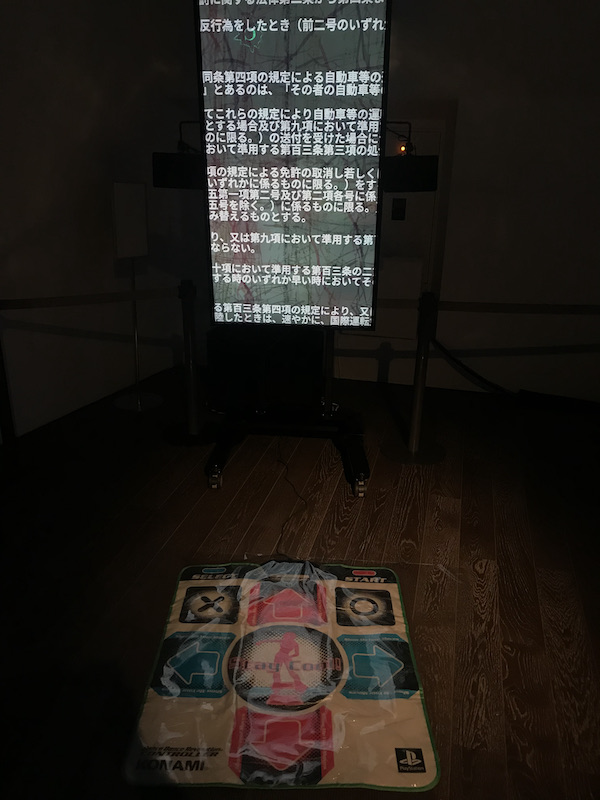21st Japan Media Art Festival, Newbies Award, 2018
Exhibited at 21st Japan Media Art Festival, Japan, 2018
Exhibited at INSTRUMENTA 2018: SANDBOX, National Gallery of Indonesia,
Indonesia, 2018
Exhibited at Media Art Festival Yambaru, Ogimi, Okinawa, 2018
Source Code URL: https://github.com/aidatorajiro/MemgameJS
Media Art Festival Archive Website: https://j-mediaarts.jp/en/award/single/im-in-the-computer-memory/
Walkthrough: https://youtu.be/PB19q6_8lCE https://youtu.be/4vvN761sYp4
It is an application and installation work. In the exhibition space,
there is a large screen and a touchscreen. Small grey squares are
arranged on the screen. These squares represent the data stored in the
computer, most of which is invisible when you normally use computers. A
small white dot is placed at the center of the screen. This represents
yourself, making you feel inside the small universe within a
computer.
Through exploring the inner space of a computer, you may link the
gray-scale pattern of data with your own life experience. Although the
data behind the scene is not easy to “properly” understand unless you
are an expert, with these data transformed into shapes and colors, it
may become a shipyard, an abandoned factory, or a forest. We may obtain
“other meanings”, or “improper way of understanding”. In this way, the
division between machines and humans, between those who know machines
and those who don’t, may be eased. We may be able to perceive machines
not just as mechanical calculators, but as beings with a very human
warmth. That’s what I was aiming for in this work. I made this work
thinking that it was a game. This is because one of the purposes of this
work is for me to enter the world of the computer and go on a
“sightseeing” or “adventure”. In a way, it’s like envisioning another
version of myself.
You may see this work looks very simple and minimalistic, but in
reality I have tried and failed many times, and it is built on a lot of
arbitrariness. For example, I designed a trail of footprints created by
the player (white dot), so that the change in position and velocity
would project the “atan” function, and then adjusted the parameters
slightly to make it move in the most “comfortable” way.
As for the technical aspects, it was developed using three.js, a
JavaScript library that can draw WebGL, and Erectron, a software that
can develop JavaScript desktop applications. In fact, this application
was originally developed using Python, not JavaScript. I exhibited it as
a “game” at an art festival during my high school days, but it did not
work well, so I re-created it using JavaScript.
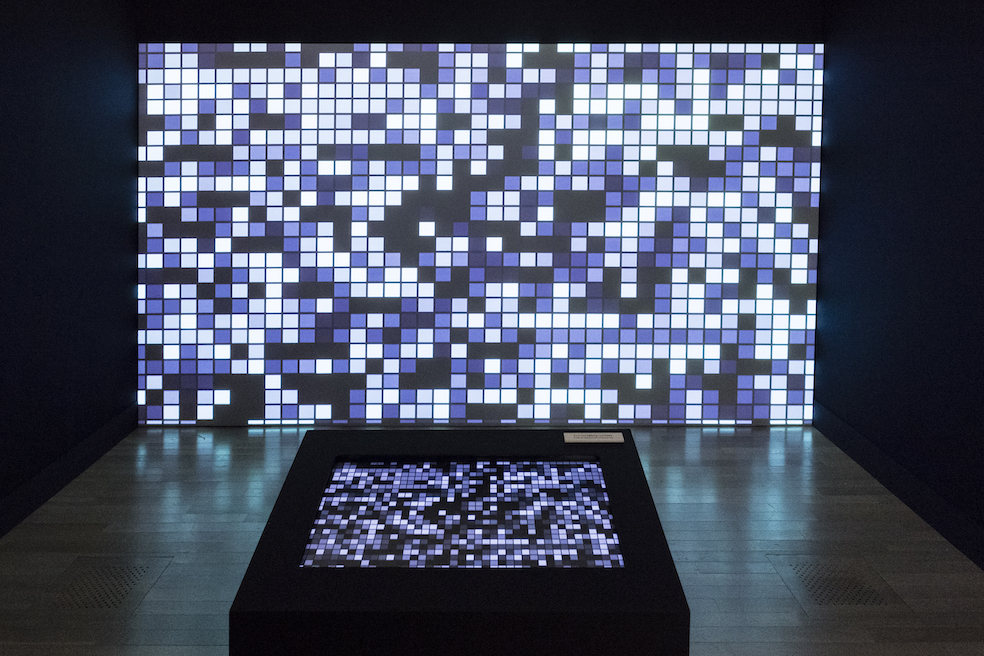
Photo taken at 21st Japan Media Art Festival
Credit: Japan Media Arts Festival
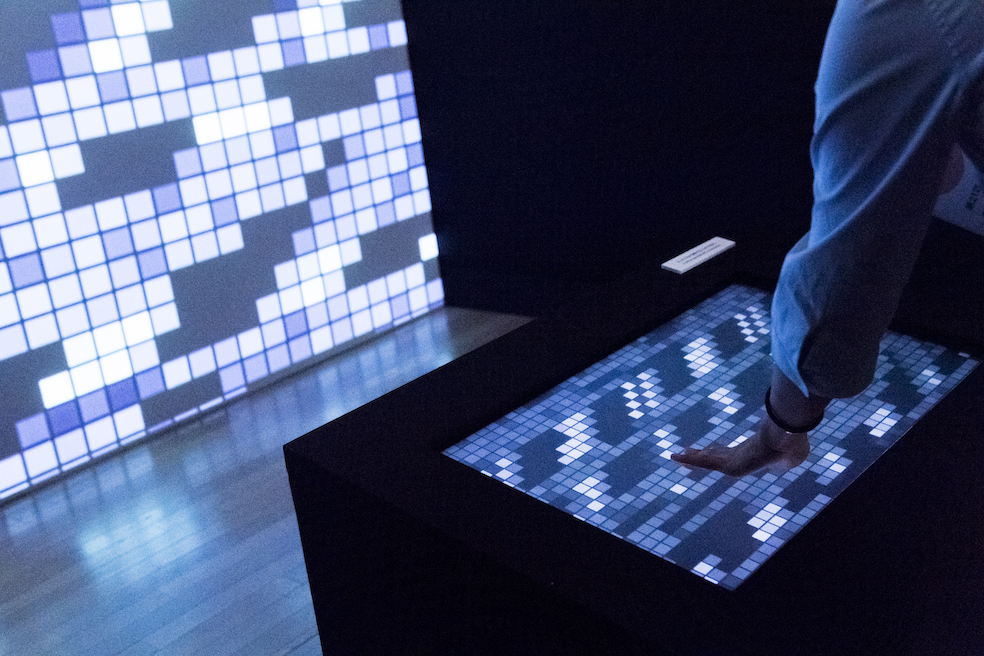
Photo taken at 21st Japan Media Art Festival
Credit: Japan Media Arts Festival

Computer graphics of the exhibition layout
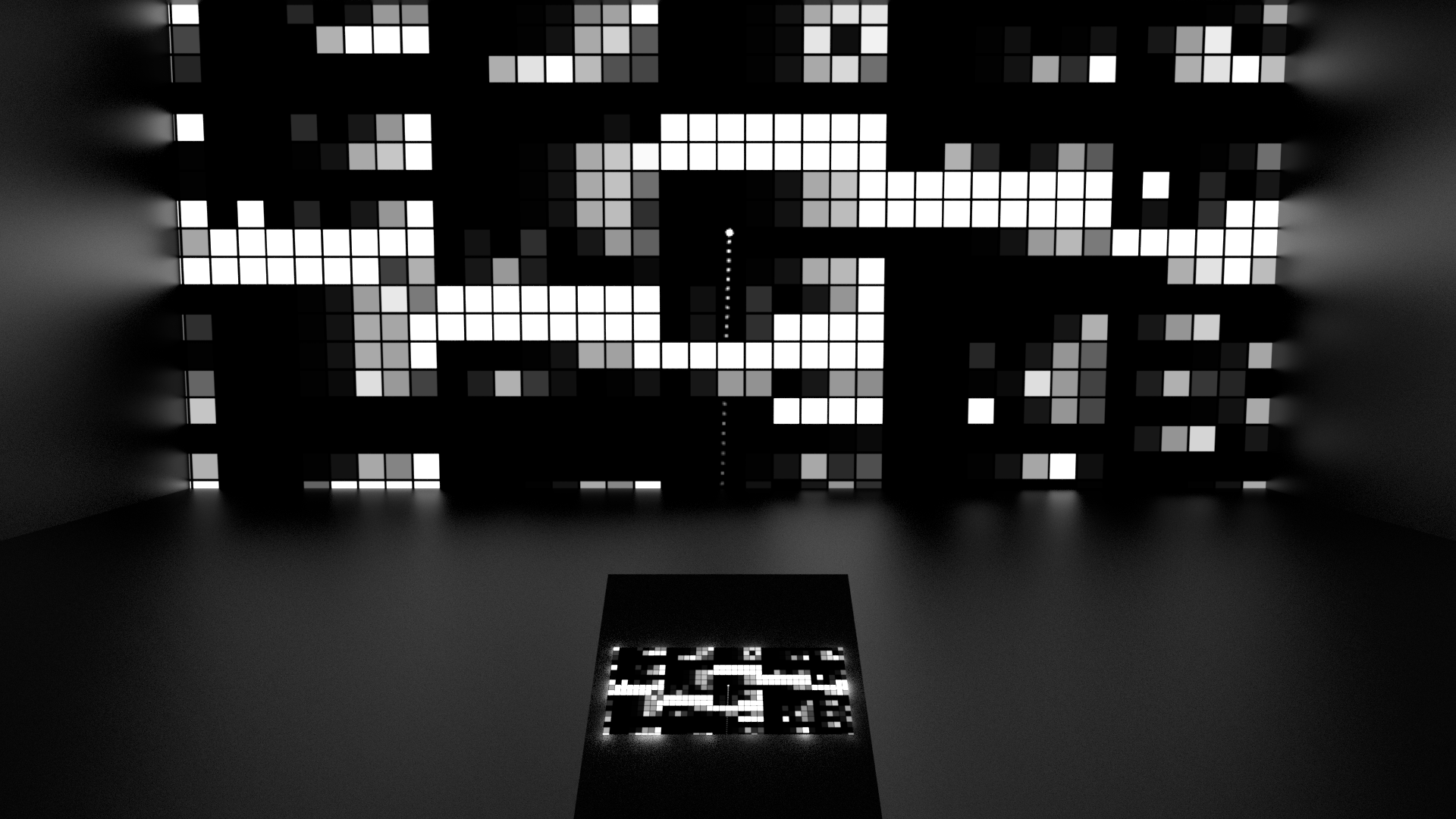
Computer graphics of the exhibition layout
RDWP (2017 – present)
Website
URL: https://rdwp.netlify.app/
It is a project to create a website similar to “an old Internet
website with no clear purpose” or “a game using only HTML and CSS, where
you click on links to explore the world” using a functional language,
Haskell. An example of such website is the “Adventure Game Online
‘Labyrinth’” (http://hwm7.gyao.ne.jp/ex328/stage/history.html), which
was updated from 1999 to 2007.
Compared to programming languages such as JavaScript, C, Python,
etc., functional languages have a “mathematical” way of thinking (e.g.,
the meaning of “=” is not “assignment” but “definition”), which gives
them a unique divinity. It is a work that combines my romantic yearning
of Functional Programming technology and the Internet culture of the
past, especially when I was 10 years old or so. It is still under
development, and the contents are being added slowly and gradually.
Visitors use keyboard and mouse to play it. Many algorithms, shapes,
pictures that I found interesting are combined into one app. For
example, it contains an algorithm that simulates waves based on physics
knowledge, or a blurred picture of a 404 page I took from somewhere on
the internet, and so on…









